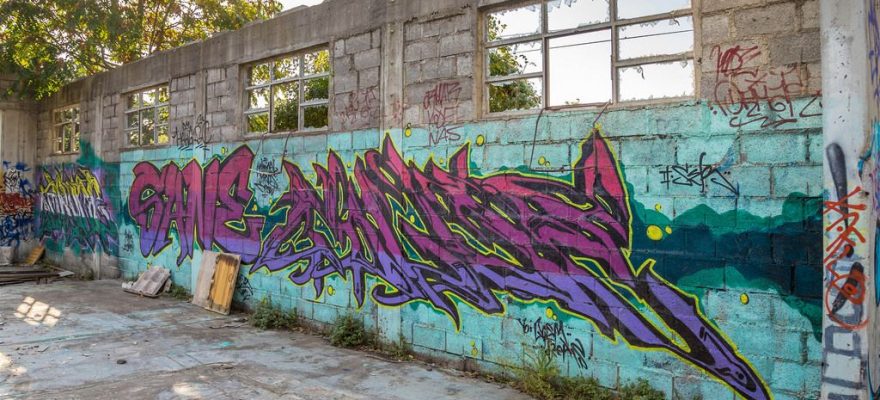

Sébastien Lachaussée & Elisa Martin-Winkel
STREET ART AND AUDIOVISUAL WORKS – THE DELICATE ISSUE OF CLEARANCE
Cities are covered with numerous graffiti, collages and works of street art that are an integral part of the urban landscape and are difficult or impossible to exclude when shooting films and audiovisual works.
In the summer of 2023, the Paris Court of Appeal condemned La France insoumise (French political party) for the exploitation of campaign videos reproducing the street art work « La Marianne asiatique » without the prior authorization of its author, the artist COMBO (CA Paris, July 5, 2023, 21/11317).
This decision clarifies the application of the French “panorama exception” and gives us the opportunity to consider the protection of street art works by French copyright and the difficulties risen by their insertion in audiovisual works.
PROTECTED WORKS
The protection of street art works by French copyright is subject to French common intellectual property law and the principle is that a work is protected by copyright if it is original, i.e. if it is imbued with the personality of its author and is the result of a creative intellectual process. The type of work does not matter: tag, stencils, collage, mosaic …
Among various examples, the case law has recognized the originality of the mosaics of the famous artist Invader, judging that « the transposition with pool tiles of the pixels of pre-existing video game, bear the imprint of his personality and it does not matter that other artists may have transposed pixelated creatures extracted from video games into other materials. Similarly, the nature of the urban supports of the said swimming pool tiles sealed in the walls, and the choice of their locations bear the imprint of the personality of their author » (TGI de Paris, Civil Chamber 3, November 14, 2007, 06/12982).
It should be noted that article L.113-1 of the French Intellectual Property Code provides that « the quality of author belongs, in the absence of proof to the contrary, to the person or persons under whose name the work is disclosed ». In this sense, the anonymity of street artists can make it difficult for them to claim rights to the work, as they must prove their authorship.
At the European level, EUIPO considered that Banksy’s desire to remain anonymous meant that he could not be identified as the undisputed owner of the intellectual property rights in the works and could not claim such authorship to obtain the registration of a trademark reproducing the works to overcome that difficulty (EUIPO, 14 September 2020, n°33843C).
However, authors can provide such proof by any means and the Paris Court (RG n°03/04378) notably ruled that finding in the suspect’s home a graffiti similar to the one for which he is accused may be a decisive clue to his guilt and therefore also to his quality as author.
We will not dwell here on the criminal classifications that can be applied to street art, nor on the difficulties inherent in the distinctions between ownership of the work and ownership of the medium – which are not at the heart of the debate about the incorporation of street art works into audiovisual works, but which nevertheless remain real for street art authorsOn the other hand, it should be noted that under French copyright, the author of a street art piece detains the rights of representation and reproduction and that his authorization is necessary for the exploitation of the work. He is also the owner of moral rights, in particular about respect for the work.
NECESSARY BUT DIFFICULT CLEARANCE OF RIGHTS
Anonymity of street artists mentioned above can lead to the qualification of an orphan work, meaning « a protected and disclosed work, whose rightsholder cannot be identified or traced, despite diligent, proven and serious research. » (Article L 113-10 of the French IPC). In the absence of the author’s authorization, no exploitation of the work is possible unless it falls within the framework of the exceptions provided for in articles L35-1 et seq., mainly in favor of libraries and archives.
It is therefore a question for a producer wishing to integrate a work of street art into a film, to search for the author to obtain his authorization, or to meet the criteria of the French exceptions to copyright and in particular the short quotation exception or the panorama exception. Often, producers have no choice but to rely on them in the field of street art.
As for the short quotation, it is defined in article L 122-5 of French IPC and must meet the various criteria set out. The excerpt must come from a disclosed work, be incorporated into a work with a critical, polemical, pedagogical, scientific, or informational purpose, the quotation must be short, and the moral rights of the authors must be respected. It is settled case law that the insertion of an entire work, even in a reduced format, does not fall within the scope of a short quotation, which excludes, for example, the appearance of an entire work of street art.
In addition, the Paris Court of Appeal also rejected the application of this exception in the case of « Marianne asiatique », pointing out that the name of the artist or the source of the work was not mentioned in the offending broadcasts and was inserted for the purpose of illustrating a political speech and was therefore not justified by a critical nature, polemical, pedagogical, or informative.
The so-called « Panorama » exception provided for in the same article provides that for work previously disclosed, an author may not object to « reproductions and representations of architectural works and sculptures, permanently placed on the public space, made by natural persons, to the exclusion of any use of a commercial nature« .
Its application in the context of audiovisual production is highly unlikely, as it presupposes an exploitation by a natural person, without any commercial purposes.
Moreover, with regard specifically to street art, the Paris Court of Appeal, in the above-mentioned judgment, ruled out the application of the exception by noting that the fresco could not be assimilated to an architectural or sculptural work, regardless of the fact it was affixed to a wall, and that it was not permanently placed on the public space, because it was subject to external hazards.
Finally, the producer of an audiovisual work in which a street art piece appears could invoke as a defense the fortuitous inclusion of the latter in the film in question.
Indeed, in a highly noticed decision of May 12, 2011, about the documentary film « To be and to have» in which illustrations of a reading teaching method appeared in the background of the classroom, the Court of Cassation ruled out infringement of copyright (Cass. 1st Civ., May 12, 2011, No. 08-20.651).
However, it has since been clarified that, in view of the case law of the Court of Cassation, that this exception only applies if the reproduction is both incidental and fortuitous, which excludes any deliberate uses such as filming an interview in front of a work of street art, using it on a poster, making a close-up shot of it, etc. Moreover, decisions validating this exception remain rare and it is not certain that it will be maintained in future decisions.
In view of the above, it appears that the inclusion of street art in a film raises important questions regarding the clearance of rights. This requires a contextual analysis, in view of the integrated works, the conditions of such integration, the protection of these works, the practical conditions of access to authors, and may require the expert advice of a specialized law firm.
SHARE THIS ARTICLE
CONTACT
OUR OFFICES
INFORMATION
sl@avocatl.com
PHONE
+33.1.83.92.11.67
Address
11 rue Sédillot
75007 Paris
Follow us :
Newsletter
Please enter your e-mail :
